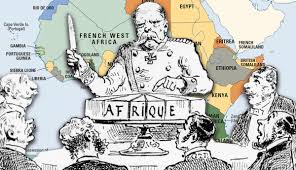Reflections on Cuba’s Black Radical History, Revolutionary Health, and Grassroots Media
Semassa Boko and Jeanette Charles

Reflections on Cuba’s Black Radical History, Revolutionary Health, and Grassroots Media
It is vitally necessary to bridge the gap in knowledge and dismantle US misinformation campaigns against Cuba’s realities for international English-speaking audiences.
“We wanted to reach a young audience in the United States that is not typically exposed to engaging and in-depth stories about Latin America and US policy in the region.”
“Each generation must, out of relative obscurity, discover its mission, fulfill it, or betray it.” — Frantz Fanon[i]
Radicals, revolutionaries, and freedom fighters committed to imagining and building new societies must demonstrate a willingness to experiment with our strategies. Media, education, healthcare, and governance policies are important arenas where movements and masses materialize political visions. The Black Radical tradition on the continent and in the Diaspora provides strong references in this regard. Cuba is a critical example.
In the case of Cuba, the roots of Pan-Africanist struggle are a primordial philosophical facet of the nation’s socialist and anti-imperialist praxis. African teachings and Black leadership have reverberated over the course of the Cuban Revolution from its independence and abolitionist movement, 20th century revolution, relationship to Harlem and US Black Power movements , role in anti-colonial Angola, and pivotal contribution to the end of apartheid in South Africa. Cuba’s strategic solidarity and internationalist approaches have proven decisive.
“African teachings and Black leadership have reverberated over the course of the Cuban Revolution.”
Today, Cuban organizers, cultural workers, writers, journalists, artists, and more are working overtime structuring their new anti-colonial society and combating the insidious US propaganda machine. One of their fronts is by crafting innovative forms of media by holding the reins of their narratives and sharing their achievements with global audiences.
In 2020, the COVID-19 pandemic laid bare the need to divest from a white supremacist and colonial political-economic-cultural order. The global death rates from COVID-19 and the impact of its variant strains on the working classes and poor are testaments to this. As the US and other colonial powers allowed millions to perish and have hoarded COVID-19 vaccines, waging apartheid in the name of healthcare, Cuba serves as a stand-alone example of justice and solidarity.
Shortly after the world shut down, Cuban doctors took to the streets in their own cities and abroad. Continuing a long tradition, Cuba’s international humanitarianism and medical brigades are a beacon of hope and highlights what we must do to face a world wherepandemics and other global catastrophes become increasingly frequent unless we make drastic structural shifts. As the ruling classes increase their investments in surveillance and militarization at the expense of public health; rebellion awaits clearly on the horizon. The time is ripe for transformation. Cuba’s people-first model has ensured an impressively low infection rate and will assure vaccines for the entire island and millions more beyond its borders. As such, Black and Brown-led international solidarity continues to champion a multipolar and anti-imperialist world where processes like Cuba’s are honored.
“Cuba’s people-first model has ensured an impressively low infection rate.”
The Cuban struggle embodies a thorn in the side of the US empire due to its stringent defiance, all the while located 90 miles away and as a Black majority nation. And, there is a rightful viscerality to recognizing and understanding that Cuba – which is too often misrepresented by the US as non-Black – is culturally, politically, and spiritually Black, of African descent. As Maurice Bishop , the Grenadian revolutionary and leader of the New Jewel Movement, once said, “Washington fears that we [Grenada, Cuba, the Caribbean] could set an example for the rest of the region if our Revolution succeeds. ” This fear is what continues to fire US imperialism’s intervention. However, these efforts continue to have an adverse effect, inspiring generations of revolutionaries to fight for Cuban sovereignty.
In December 2019, we travelled to Cuba part of a Black led and people of color solidarity delegation called Black Socialist Strategies for Healing and Healthcare (see a virtual report back from the delegation here , and a personal reflection by Semassa here ). During our time, we exchanged with Cuban healers, African spiritual practitioners, farmers, war veterans (from the campaign in Angola), historians, artists, and activists. Our delegation coincided with the anniversary of Cuba and the US’s announcement of re-establishing diplomatic relations under the Obama administration. Unfortunately, these conversations fell short of abolishing the blockade and under the Trump administration, major undertakings were steadily chipped away.
“We exchanged with Cuban healers, African spiritual practitioners, farmers, war veterans (from the campaign in Angola), historians, artists, and activists.”
At the same time, our delegation also symbolized a celebration of the decades’-long solidarity between the Martin Luther King Center and Witness for Peace. All our gatherings emphasized the everyday struggles Cubans face under the unjust and genocidal US blockade costing the island nearly USD $6 billion in 2020 according to reports. At every meeting, Cubans expressed their hopes for a future free of the US blockade and US imperialism.
For this reason, solidarity organizing, the media, and reporting on the truth about Cuba are necessary. Projects such as Belly of the Beast are bridging the gap in knowledge and dismantling US misinformation campaigns about Cuba’s realities for international English-speaking audiences.
Belly of the Beast (BoB), a “collaborative space” that produces media content and various forms of participatory journalism, speaks to a 21st century audience. BoB combines diverse and interesting content along with a “dynamic and fast-paced” video style. Furthermore, their events are in collaboration with an array of radical scholars, activists, and journalists in Cuba and internationally.
In a world where movements and masses are mobilizing on the streets from Minneapolis to Lagos and Port-au-Prince, principled and incisive reporting is important for present-day struggles and annals of history.
Inspired by our time in Cuba and BoB’s on-the-ground reporting, the following is a brief exchange we shared with BoB. This is an initial conversation about media and movements in this time. U.S. Imperialism is a monster with an insatiable appetite (making Belly of the Beast a terrifically apt title). We are honored and grateful for their time, work, and contribution to the Black internationalist struggle today.
Interview
What moment or events led to Belly of the Beast’s creation?
Belly of the Beast was inspired out of the recognition of the dearth of responsible and impactful media coverage of Cuba and US-Cuba relations. Cuba is a fascinating country due to the unique experience of its revolution – it’s the only country in the Western Hemisphere to have openly defied U.S. hegemony for the last 60 years and as a result it continues to face the longest trade embargo in modern history. Cuba also has an outsized influence around the world and in the United States – in the recent US presidential election, Trump won Florida thanks to support he garnered with Cuban-Americans who favored his hardline Cuba policy.
Despite Cuba’s importance, media coverage is severely lacking. In our initial conversations about the possibility of starting our own media organization, we decided that we wanted to break with the model of parachute journalism, by which foreign journalists, typically North American or European, descend on countries in the Global South and report on events with a slanted perspective representing their own countries’ interests and with minimal if no input from journalists on the ground. From the beginning, we sought to create a collaborative space where Cuban journalists and filmmakers would work collaboratively with their foreign counterparts. We also wanted to reach a young audience in the United States that is not typically exposed to engaging and in-depth stories about Latin America and US policy in the region. As such, our primary medium is video and we have crafted a dynamic and fast-paced style to reach this audience.
“From the beginning, we sought to create a collaborative space where Cuban journalists and filmmakers would work with their foreign counterparts.”
Many of our initial conversations about the project revolved around the fact that what we were aspiring to create something that was both ambitious and completely new. We struggled to find examples to follow of successful video-focused independent progressive media aimed at a young audience anywhere in the world, and much less in Cuba. Our mission was exciting, but also daunting. How could we be able to build an audience online with minimal resources? How should we balance our commitment to adhering to the highest journalistic standards and providing meaningful context with the need to reach an audience with a relatively short attention span? How would we form a working environment that was participatory and collaborative while maintaining a unified and coherent vision and voice? How would we make Belly of the Beast sustainable? We continue to have discussions around these questions.
Tell us more about the media landscape in Cuba and what your work addresses.
The media landscape in Cuba is bleak. State-run outlets are predictably propagandistic while US-based journalism reinforces narratives propagated in Miami and DC. Some foreign media organizations try to find an “unbiased” happy medium, but the result is often a false balance that obscures the context necessary to understand a country where every aspect of life is shaped by six decades of economic war waged by the world’s most powerful government.
Belly of the Beast is trying to fill the void left by media coverage of Cuba and US-Cuba relations by prioritizing the following:
- Investigative journalism that exposes the political and economic interests driving US policy and the impact of that policy on people both in Cuba and the United States.
- People-focused stories that are often misreported, underreported or ignored.
- In-depth and nuanced reporting on a country that is typically romanticized or demonized.
One of our biggest challenges has been getting access to stories. Due to Cuba’s socialist system, many institutions are state-run and thus getting access requires authorization from the government. This is not always so easy. The Cuban authorities are wary of providing unfettered access to foreign journalists, an understandable concern given that the US government has been actively seeking regime change in Cuba for 60 years.
Another major challenge is convincing supporters and allies in the United States why our work covering Cuba and US-Cuba relations is so important. A year ago, in explaining why our War on Cuba series was relevant, we argued that Trump’s Cuba policy could have a decisive impact on the outcome of the presidential election in Florida. At the time, some people scoffed at this prediction. As it turns out, we were right. We don’t expect Cuba’s relevance in US politics and in the world will abate in the coming years. If anything, as Cuba continues to transform and its relations to the US government improve under Biden, Belly of the Beast’s role will become even more crucial.
We are interested in learning about your philosophy of journalism. What is the relationship between your organization and social movements in Cuba and internationally? Should journalists strive for “objectivity,” or something else?
Belly of the Beast adheres to the highest journalistic standards. Our first obligation is to the truth. We strive to present information accurately and with meaningful context. We are committed to the discipline of verification. However, we recognize that while our journalistic methods may be objective, we are not. Belly of the Beast is made up of individuals who care deeply about social justice and fighting for a better world. Progressive values guide our work, from social media posts to long-form documentaries.
We consider ourselves an ally to those fighting for a better world and we believe our work can be a powerful tool in that struggle. This past year, we supported the campaign to award the Nobel Peace Prize to Cuban doctors and participated in the US-Cuba Normalization Conference. In 2021, we plan on organizing screenings of The War on Cuba across the United States, including Washington, DC. In addition, we plan on strengthening our collaborations with organizations and individuals working to change US policy towards Cuba and to foster greater understanding between the two countries.
READ MORE AT: https://blackagendareport.com/reflections-cubas-black-radical-history-revolutionary-health-and-grassroots-media




